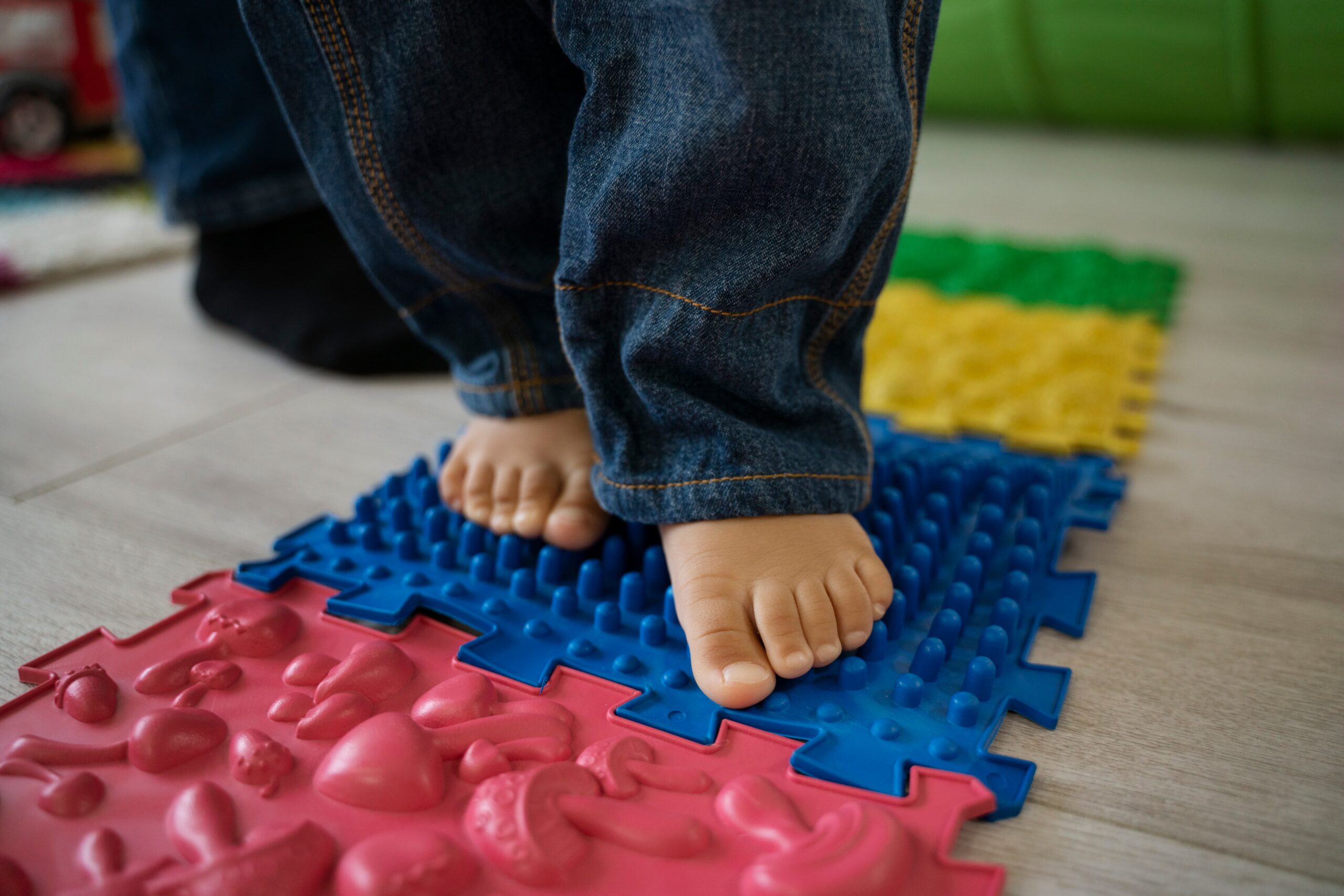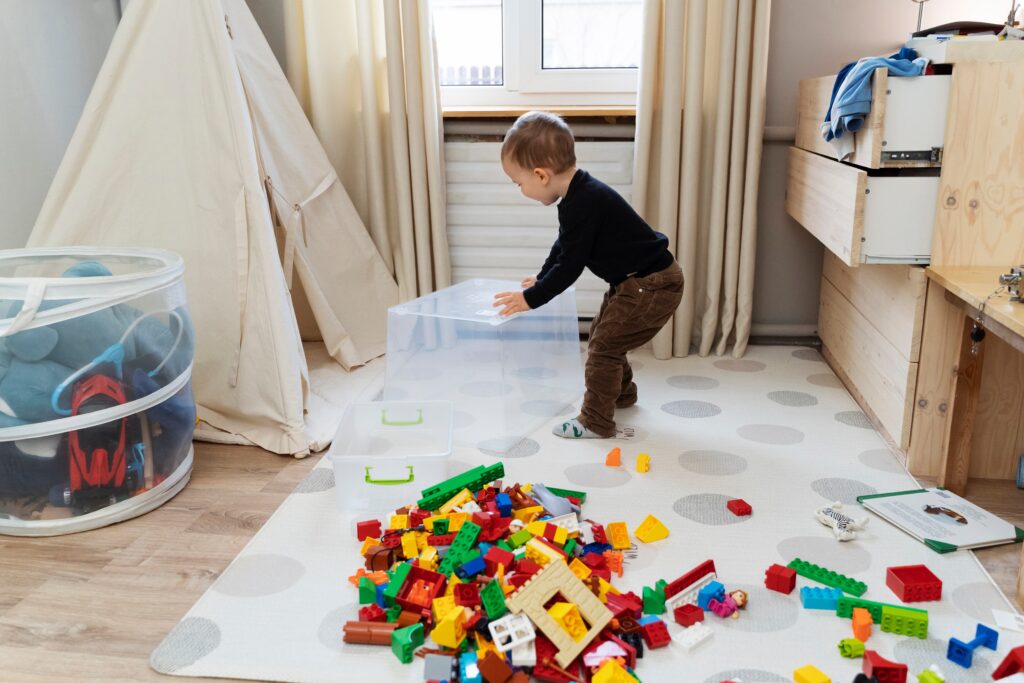
As a parent or caregiver of a child with autism, you’ve probably heard of the sensory rooms, but do you know what they are? Do you understand why your kid might need one? If so, you’re in the right place, as we’re sharing some excellent sensory room ideas for autism that you might want to consider for your home. If not, don’t worry, because we’re going to dive into the basics of sensory rooms for autism that you should know about.
What Are Sensory Rooms for Autism?
Children with ASD typically process sensory information differently, and sometimes they experience sensory overload. A Sensory Room is a place where a child can go to manage their sensory overload and self-regulate. It is designed to provide comfort and calmness to people with sensory issues.
Most therapy centers have sensory playgrounds or rooms with highly therapeutic equipment. But you won’t need all that to have a sensory room in your home for your child. You just need a few adjustments and a lot of creativity. Read on as we share with you some autism sensory room ideas.
Sensory Room Ideas for Autism
The room doesn’t have to be big as long as it can provide your child with what they need to calm them down, especially during sensory overload.
Make Sure There’s Soft Lighting to Make the Room Relaxing
No need to invest in high-tech sensory lighting. You can achieve the same effect by getting string lights, lava lamps, rechargeable candles, and others. Keep in mind that lighting plays a big role in how a person feels, so we must choose options that are going to be relaxing and comforting.
Add Simple Tools That Could Encourage Movements
Instead of getting pricey swings and slides, the best autism sensory room ideas are those that suggest items for vestibular stimulation. If the items can be found in your home already, that’s even better. For example, you can move your rocking chair to the sensory room. If you have an exercise ball, that’s also a great addition to any sensory room because it develops coordination and balance. A mini trampoline would be nice, too. If you don’t have extra room in the house, you can always have these in your yard that you could turn into a sensory playground.
Have a Crash Pad for Safety
Crash pads are a necessity in any sensory room. If you don’t have any, you can simply make one. Use a zip-up duvet cover, then fill it with pillows and blankets. If your kids have lots of plushies, you can add them, too. This DIY crash pad will add a layer of safety to your sensory room.
Create a Tactile Wall
By having a tactile wall in the sensory room, you’re going to encourage your child to explore their senses and help manage their responses to them. Again, nothing fancy here, just random household items like different fabric swatches, a piece of sandpaper, bubble wraps, a small block of wood, old CDs, and anything that would help them be familiar and comfortable with different textures would be great. You can also have a rack of items like lotions, shaving cream, party string sprays, a hand-held massager (for vibration), and other things that can help desensitize them.
Set Up a Sound System
We don’t mean you should get them a state-of-the-art system. Just a small portable speaker and an old phone where music can be played will work. Have playlists ready for different types of music. For example, you might want to have a playlist of instrumental music for your story time and some exciting upbeat ones for play time.
Have a Cozy Corner
If the space allows it, you should have a more private space for your child to retreat to. It could be a small play tent or an inflatable pool that you can fill with stuffed animals. Also have some weighted blankets nearby for when they need some calming deep pressure.
Don’t Forget the Storage Bins
This is not just for keeping your sensory room organized. Kids with autism may experience sensory overload at any time, and having storage bins that are properly labeled and accessible to them in their own familiar space can be very helpful. With storage bins, your kids can decide what they want to play with and when.
Consider a Sensory Playground
Just because you have limited space inside the house doesn’t mean you can’t have a sensory spot for your child. If you have a small yard, you can turn a part of that into their sensory playground. Set up an obstacle course, have a couple of swings, a trampoline, and that’s already a good start. The grass, the water sprinkler, and the water hose, among others, can all help your child with sensory issues. You can pitch a small tent and have an inflatable pool in that sensory playground, too.

How Can a Sensory Room Help Your Child?
We’re sharing simple autistic sensory room ideas here because we know how helpful they can be. Having a sensory room for your child allows them to be familiar with the sounds, textures, and other things they’re sensitive to, without overwhelming them. This room gives them control and helps them regulate their emotions and their behavior. This also helps improve focus. Additionally, it’s like telling your kids they will always have a safe space where they won’t have to worry about any potential triggers.
Make the Most of the Sensory Room
These autistic sensory room ideas will all be put to waste if your child won’t spend time in their sensory room. For your kid to get the most out of it, add time in the sensory room to their “sensory diet”. It should not be a room they’d visit as a punishment nor a reward. Incorporate it into their routine and see what a difference it can make.
When your child goes to Actify ABA for their therapy, they also spend time addressing their sensory sensitivities in a similar space. And we hope the sensory room ideas for autism that we shared here can help you create one at home, too.
We at Actify ABA believe how important it is for children to be equipped with the necessary tools for success, and that’s what we do with the ABA therapy programs in Maryland, which we tailor for them. Reach out to us to learn more!
